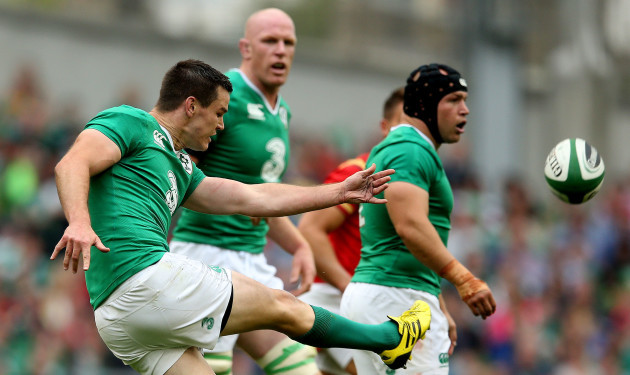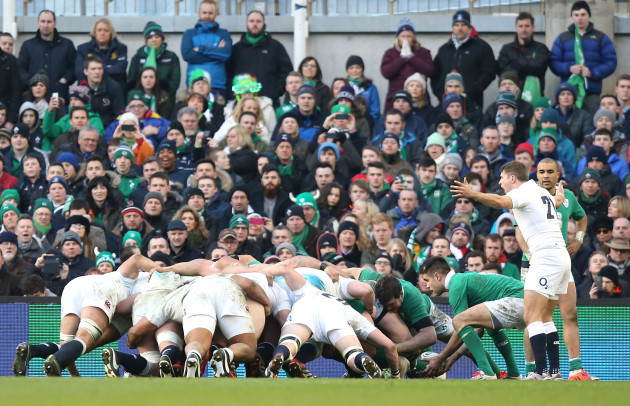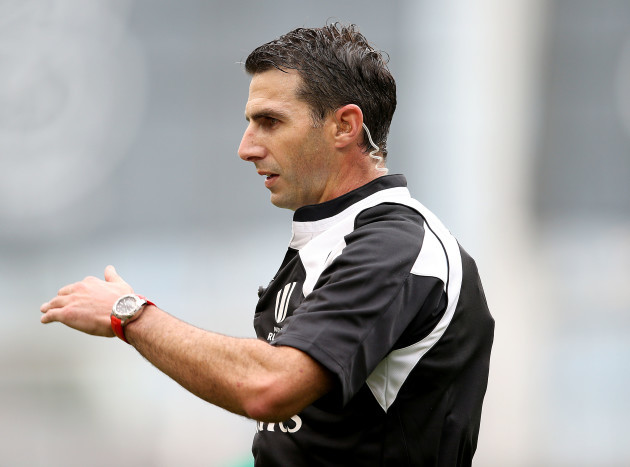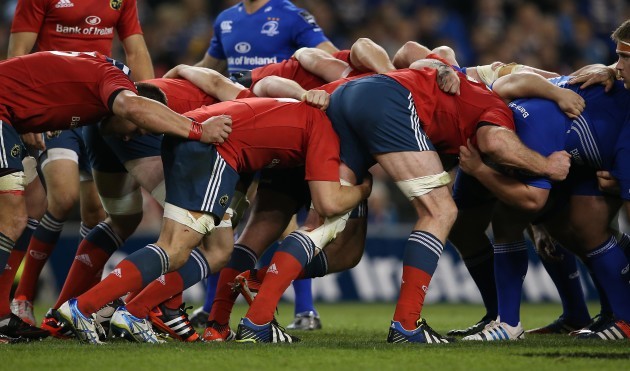WORLD RUGBY HAVE announced a package of law trials that will be run across a number of international and domestic competitions in 2016.
The Pacific Challenge, U20 Trophy, Tbilisi Cup, Nations Cup, FFR Academy league, Australian NRC, Welsh Premiership and Colleges championship, and the RFU Army Premiership will be the testing grounds for some interesting new trial laws.
The trial laws that are successful will then move onto a far more extensive global trial in 2017, starting in January of that year in the Southern Hemisphere and August in the Northern Hemisphere.
Different laws will be trialled in different competitions, but what’s involved?
Points
In order to encourage teams to attempt to score more tries, rather than kicking penalties or drops goals, World Rugby’s Law Review Group has put forward a new scoring system for trial.
- A try will be worth six points
- A conversion will be worth two points
- A penalty will be worth two points
- A drop goal will be worth two points
A further tweak means that if a try probably would have been scored but for an opponent’s act of foul play, the subsequent penalty try will be worth eight points, with no conversion attempt necessary.
Scrum feed
Trial Law 20.6 (d) is likely to cause some debate. Essentially, it means that the scrum-half feeding into the scrum can align his outside shoulder with the middle line of the scrum, leaving him “a shoulder width towards his (own) side.”
The feed itself must be straight, but it’s clearly a major advantage to feed into the scrum from that position. World Rugby say the thinking is to reduce the pressure on the hooker striking the ball.
In another tweak, the hooker will be allowed to give his scrum-half a signal that he is ready for the feed, again “to give the advantage to the team throwing-in the ball.”
Botched kick-offs and restarts
We’re used to seeing a scrum in the middle of the pitch whenever a team sends their restart directly into touch, into the in-goal area, less than the required 10 metres, or when the kicking player’s teammates aren’t behind him.
Under one of the new trials, the team defending that kick attempt will be awarded a free-kick in the middle of the pitch in the event of any of the above failings.
There will be no scrum option for that free-kick, so expect teams to quick-tap and run. Again, the thinking here from World Rugby is to speed up the game.
Mauls
Another of the new trial laws says that a maul must move forward within five seconds after it was first set up. If that doesn’t happen and the referee can see the ball, he tells the attacking team to use it. If they don’t do so within a “reasonable time” a scrum is ordered.
Advantage
Under trial Law 8.1 (a), whenever a defending team commits multiple penalty offences in the same passage of play, the attacking team’s captain will be able to decide which of them to go back to once play is stopped.
Previously, referees would return to the most recent penalty offence after playing advantage, but now the captain may decide that the position of a prior penalty offence within the same passage is more advantageous to his team.
End game
World Rugby is keen to strictly punish infringements in the dying moments of games, and will trial a new law in that regard.
If time has expired and the referee awards a mark, free-kick or penalty, play continues. Perhaps more importantly, if time has expired and a team kicks a penalty into touch, the referee allows the throw-in to be taken and play goes on until the ball next becomes dead.
Previously, any team kicking a penalty into touch with time expired was ending the game, so attacking teams chasing victory had to tap the penalty and run. The prospect of defending a five-metre lineout will make defensive sides think twice about infringing.
Front row subs
Trial law 3.5 (h) means that if a team cannot provide enough specialist front row forwards – due to injuries or red cards – the match will continue with uncontested scrums, but each team must have eight players in the scrum.
The thinking here is to discourage teams from going to uncontested scrums altogether, as their backline would obviously be short one player at scrum time, leaving them at a disadvantage in attack and especially defence.
Scrum issues
World Rugby is keen to further “promote stability and speed of ball availability” from scrums, so have made a few trial tweaks in that department. With that in mind, there’ll be a rejig in relation to the ‘crouch, bind, set’ calls.
Under the trials, ‘crouch’ will mean the front rows need “to be shoulder to shoulder with their opponents,” even closer than is currently the case.
On the ‘bind’ call, the props will “position their arms in the correct ‘bind’ position,” while the players behind them in the scrum also tighten their binds.
The ball will then be fed into the scrum “without delay,” although still only when allowed by the referee. It doesn’t sound like too much change in words, but World Rugby appear to be looking for even less of a ‘hit’ at the scrum, hoping to further reduce instances of collapses and unstable scrums.
Another law trial sees World Rugby looking to discourage wheeling at the scrum by defensive sides, with “a new scrum formed at the place where the previous scrum ended” when it does occur. The team who previously fed the scrum will do so again at the next scrum.
The five-metre line drop out!
Just as we have 22 drops outs, there is now the possibility for five-metre drop outs too.
Basically, this option is available if an attacking player commits any action in the in-goal area that would have seen a scrum awarded anywhere else out the field, and the ball then goes dead or a defender makes it dead.
Play can be restarted by the defending team with either a five-metre scrum or a five-metre line drop out.
That drop out can be taken anywhere along the five-metre line and will be treated exactly as a 22 drop out is, so all the kicking players’ teammates must be behind him.
Touch
World Rugby are keen to clarify the laws around touch and which team has taken the ball into touch, the goal again being to speed the game up.
One key point stressed is that “a player who is attempting to bring the ball under control is deemed to be in possession of the ball.” So if a player is juggling the ball in an attempt to gather it and steps into touch, even with the ball actually not in their hands, it’s a lineout.
Secondly, it’s stressed that a player can leap from the playing area and return the ball to play in the air after it has reached or gone beyond the plane of touch, provided that they do so before they land in touch themselves.
Thirdly, any ball carrier whose momentum is taking them over the touchline can release the ball back into play, so long as the ball or their body does not land in touch before the offload.
Finally, a player who is standing in touch and catches or picks up the ball before it has reached the plane of touch or beyond is deemed to have carried the ball into touch. Lineout to the other team.
Check out the full list of law trials here, as well as learning which of them will be trialled in which competitions.
What do you think the the trial laws put forward by World Rugby’s LRG for these competitions in 2016? Which are you a fan of and which do you not agree with?





